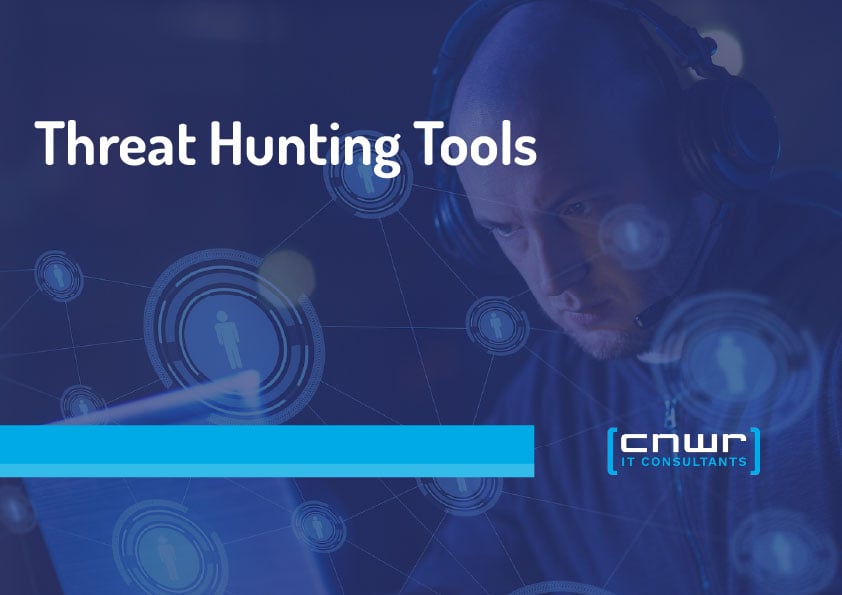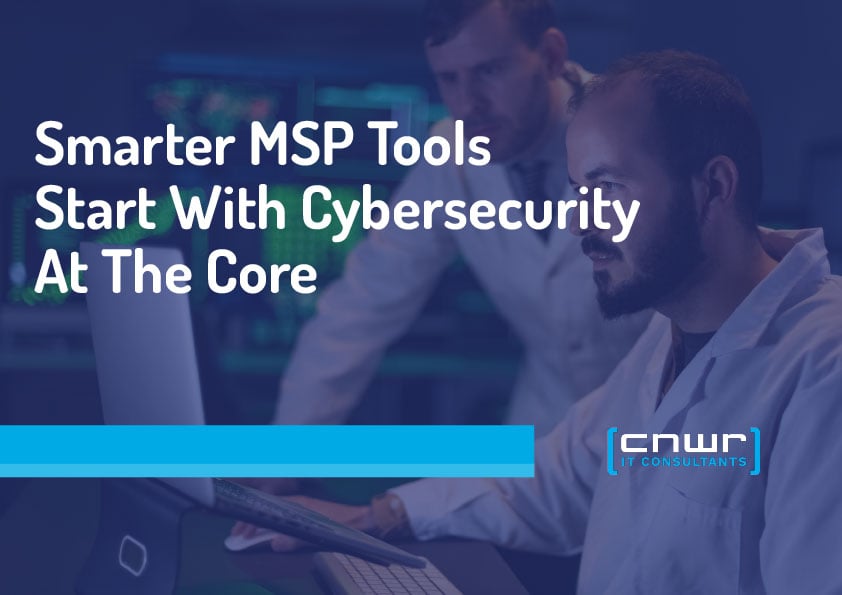In the world of cybersecurity, playing defense is no longer enough. Waiting for an alert to pop up means you’re already behind. Cybercriminals are faster and more sophisticated than ever, using AI and automation to slip past traditional defenses.
For Managed Service Providers (MSPs), the stakes are even higher, as they are now prime targets for attacks aiming to infiltrate entire supply chains. This is where proactive threat hunting comes in; it’s about switching from a reactive stance to actively seeking out threats before they can cause damage.
This guide will explore how MSPs can leverage specialized managed services tools for proactive threat hunting. We'll look at what these tools are, why they're essential for modern MSP cybersecurity, and how they deliver tangible benefits to your business and your clients. By the end, you'll understand how to build a security posture that doesn’t just respond to threats but actively hunts them down.
Table of Contents
- What Are Managed Services?
- Proactive Threat Hunting: Your New Best Friend
- The Best Managed Services Tools for Threat Hunting
- Why Your Business Needs Proactive Threat Hunting
- Build Your Defense with a Strategic Partner
- Key Takeaways
- Frequently Asked Questions
What Are Managed Services?
Before we dive into threat hunting, let’s quickly define managed services. At its core, a managed services provider (MSP) acts as an outsourced IT department, proactively managing a company’s technology infrastructure. Unlike the old "break/fix" model, where you only call for help when something is broken, an MSP’s job is to monitor your environment 24/7 to prevent issues from happening in the first place.
For many businesses, an MSP provides access to enterprise-grade technology and a deep bench of expertise without the massive overhead of an in-house team. This strategic partnership frees up your internal resources to focus on core business goals, while the MSP handles the ever-changing complexities of technology and cybersecurity. If you want to learn more about how to choose the right MSP for your business, check out our comprehensive guide, From Options to Outcomes: The Ultimate Guide to Managed Services Tools.
Proactive Threat Hunting: Your New Best Friend
So, what exactly is proactive threat hunting? It’s the practice of actively searching through networks, endpoints, and datasets to detect and isolate advanced threats that evade existing security solutions. Instead of waiting for a notification, skilled security professionals form a hypothesis, such as "What if an attacker is using stolen credentials to move laterally?" and then search for evidence of that activity.
Cybercriminals can remain hidden in a network for months, quietly collecting data and credentials. Proactive threat hunting drastically reduces this "dwell time," minimizing the potential damage. With modern attackers able to move from initial access to critical systems in minutes, this proactive approach isn't a luxury or an add-on; it should be a core component for any robust MSP cybersecurity.
The Best Managed Services Tools for Threat Hunting
Building a threat hunting capability requires a combination of human expertise and advanced technology. MSPs must equip themselves with a layered security stack to anticipate and neutralize threats effectively. Here are some of the essential managed services tools for proactive threat hunting:
SIEM and XDR Platforms
Security Information and Event Management (SIEM) and Extended Detection and Response (XDR) platforms are the backbone of any threat hunting operation.
- SIEM platforms like LogRhythm or Sumo Logic centralize log data from across your entire IT environment (endpoints, firewalls, servers, and cloud services). This gives hunters a unified view to analyze and correlate data, spotting anomalies that might otherwise go unnoticed.
- XDR solutions, such as SentinelOne or CrowdStrike Falcon, take this a step further by integrating security across multiple layers. They provide real-time threat prevention and automated incident handling, empowering hunters to respond swiftly.
Managed Detection and Response (MDR)
For many MSPs, building an in-house 24/7 Security Operations Center (SOC) is not feasible due to the high cost and talent shortage. This is where Managed Detection and Response (MDR) services become invaluable. Gartner predicts that 50% of enterprises will use MDR services by 2025. MDR providers offer 24/7/365 monitoring, expert-led threat hunting, and rapid incident response, allowing MSPs to deliver enterprise-level security without the overhead.
AI-Powered Analytics and Behavior Analytics
Artificial intelligence has revolutionized threat hunting. AI-powered tools can analyze vast amounts of data to recognize anomalies and unusual behavior that would be impossible for a human analyst to spot. In fact, 69% of organizations now see AI as a key part of their cyber defense. These tools can detect both active and dormant threats by baselining normal activity and flagging deviations, which is a core tenet of proactive hunting.
Endpoint and Dark Web Monitoring
- Endpoint Protection: Solutions like Microsoft Defender for Endpoint or Huntress provide deep visibility into what’s happening on individual devices, which is often where breaches begin. They allow hunters to track suspicious processes and isolate compromised machines.
- Dark Web Monitoring: These tools continuously scan the dark web for compromised credentials and sensitive data related to your clients. This gives you an early warning if company information is for sale, allowing you to take action before a breach occurs.
Why Your Business Needs Proactive Threat Hunting
Implementing these tools and strategies isn't just about protecting your clients; it’s about building a resilient and competitive business.
First, you gain a significant competitive advantage. By offering proactive threat hunting, you elevate your security services beyond the standard package, demonstrating a commitment to advanced protection that attracts and retains high-value clients.
Second, you drastically reduce risk. With the average cost of a data breach soaring to $4.88 million, preventing just one major incident can deliver an enormous return on investment. Proactive hunting minimizes the likelihood of a catastrophic breach that could damage your reputation and your clients' trust.
Finally, it drives efficiency. By catching threats early, you avoid the chaotic, time-consuming, and expensive fire-drill of a full-blown incident response. This allows your team to focus on strategic initiatives and growth, rather than constantly putting out fires.
Build Your Defense with a Strategic Partner
Choosing and implementing the right managed services tools for threat hunting is a complex task. It requires deep expertise, strategic planning, and a partner who understands the unique challenges MSPs face. Simply buying tools isn't enough; you need a strategy that integrates technology, processes, and people into a cohesive defense.
At CNWR, we have decades of experience helping businesses navigate the complexities of technology and cybersecurity. We don’t just sell tools; we build strategies that deliver real outcomes. We understand that effective cybersecurity is about more than just preventing attacks...it's about enabling your business to grow securely and confidently. If you're ready to move from a reactive to a proactive security posture, we can help.
Reach out to CNWR today to learn how we can become the strategic technology partner your business deserves.
Key Takeaways
- Proactive threat hunting involves actively searching for threats before they cause damage, which is essential for modern MSP cybersecurity.
- Key managed services tools for threat hunting include SIEM/XDR, MDR services, AI-powered analytics, and endpoint/dark web monitoring.
- Adopting a proactive threat hunting model provides a competitive edge, reduces business risk, and improves operational efficiency.
- Successful threat hunting requires a blend of advanced technology and skilled human expertise.
- Partnering with an experienced provider like CNWR can help you build a strategic and effective threat hunting capability.
Frequently Asked Questions
- What is the difference between threat detection and threat hunting?
Threat detection is typically an automated, passive process in which security tools alert you to known threats or suspicious activities. Threat hunting, on the other hand, is a proactive, human-driven process in which analysts actively search for unknown threats or malicious actors that have bypassed automated defenses. - Can small MSPs afford to implement threat hunting?
Yes. While building a 24/7 in-house SOC is expensive, smaller MSPs can leverage MDR services and scalable, cloud-based SIEM solutions. These tools and services make enterprise-grade threat hunting accessible and affordable, allowing MSPs of all sizes to enhance their security offerings. - How do I know if a threat hunting service is effective?
An effective threat hunting service should provide detailed reporting on its activities, including hypotheses tested, data sources analyzed, and threats discovered. It should also demonstrate a clear reduction in dwell time and the overall number of security incidents over time. Look for partners with proven track records and transparent processes.




